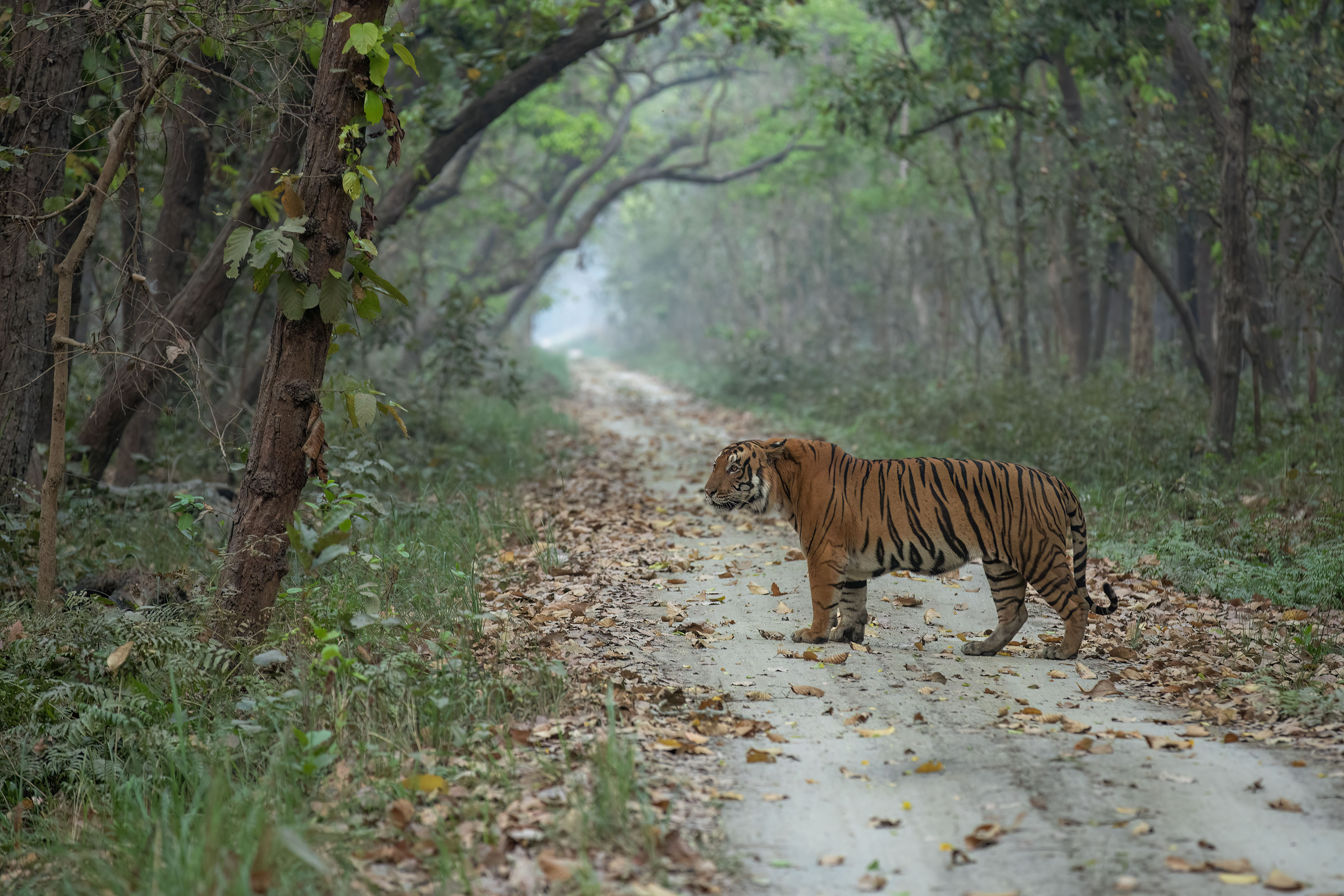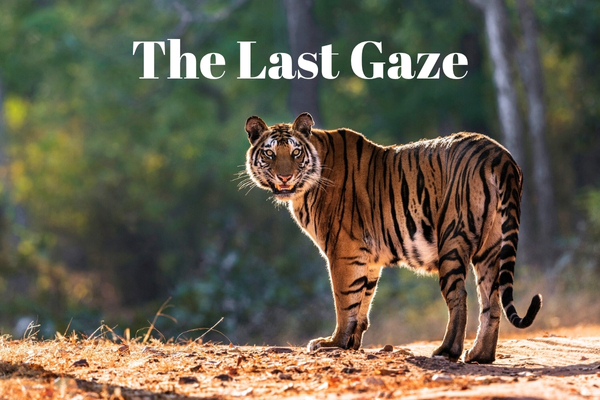.png)

Michael Patra is an economist, a career central banker, and a former RBI Deputy Governor who led monetary policy and helped shape India’s inflation targeting framework.
June 7, 2025 at 8:51 AM IST
In a dense dark time1, under a crimson sky coloured by humans clashing in two wars of the worlds - one before and one after2 - a tigress’s litter was born in captivity3.
Even as the cubs snuggled close, seeking the mother’s enveloping warmth, it was clear that a female in the litter was going to be the dominant one. Little did she know then that she was to be destiny’s child, a national icon.4
It was a makeshift cage - even the captors knew it did not behove this splendid feline. So they hoped that “..whereas in the present disorganisation....of the world, it is not possible to determine what will be suitable as a permanent basis......but whereas it is expedient to make temporary provision on the basis of the existing .... system and to leave the question of the standard best suited...when the....position has become sufficiently clear and stable to make it possible to frame permanent measures.”5

In two years measured in tiger lifetime6, she had grown into a timid but sure-footed juvenile. She was freed from captivity by her joint owners7 to be wilded in a jungle of sub-continental proportions8 that had just been vacated by malevolent, illegally residing poachers and trophy hunters9.

It must have been an overwhelming moment. Suddenly, much ahead of full adulthood, she had become an apex predator in a strange wilderness. As she probed and explored her habitat every day with long plodding journeys, marking all parts of her territory in central locations10, she began to perfect the intricacies of stillness, the stalk, the ambush, and the kill.
She became well known in the great jungle. All feared her and were equally fascinated by her menacing profile, her fully loaded armour of teeth, claws, cunning and her mesmerising stare. All turned to her to establish the rules of engagement; they assumed peculiar forms - managing jungle resources;11 monitoring inhabitants and their activities12 and enforcing the laws of the jungle13; developing the forest cover, including all under its mantle and protecting them;14 listening and sniffing for information and sensing its patterns to identify friendly formations and danger15.
Over the next eight years, again in tiger time, this alpha mother would have litters of her own. As her cubs grew up, she would teach them her ways and send them off to inhabit and rule territories of their own.16
As the tiger population began to rise to adequate numbers, the rigours of suzerainty were becoming demanding. Not everything now moved at her command - indirect control became the buzzword when some degrees of freedom are surrendered to the prey17.
The laws of the jungle were getting altered not by her but by the prey base that was developing idiosyncrasies, overshoots and irrational exuberance as well as abrupt retraces, flights to safe havens and corrections.
Powerful winds of change were sweeping through her territory from distant jungles, carrying scents and spills that set off bouts of frenzy among the animals around her18. Her hunts were not always successful; some interventions had to be finished by tactical withdrawals.
I am back to watching her today. This magnificent creature is in the prime of her life, burning bright in the forests of the night.
I cannot help but marvel at her sinewed perfection, like the mystic poet William Blake: “What immortal hand or eye could frame thy fearful symmetry? In what distant deeps or skies burnt the fire of thine eyes? On what wings dare he aspire? What the hand, dare seize the fire?”19 She seems ageless, every muscle, every movement conveying power and majesty. In one switch of her head, she sends the whole jungle scurrying for cover. Immutable child of eternity, born in the womb of time, inexorably wrought into the trees, the grass and the foliage, the sun, the moon, and the seasons.
The evening is spreading out against the sky20, and the light is slowly fading. I watch on intently as she sniffs the air on her daily round wondering which wayward wind dares to ruffle her fur.
She pauses under her favourite palm tree21 and looks at me directly in a rare head-on, the beauty of her eyes arresting.
Then,
Light goes out.
The pall of darkness descends.
Michael Debabrata Patra
Photography: Subrat Seet
This evocative photo essay was Dr Michael Patra’s swansong as Deputy Governor of the Reserve Bank of India, penned upon his retirement and reproduced here with his kind permission. In it, he invokes the spirit of the tiger, a quiet tribute to the enduring strength and watchfulness of the institution he served.
References:
1. 1934
2. The first world war, July 28, 1914 to November 11, 1918; the second world war, September 1, 1939 to September 2, 1945.
3. British rule in India.
4. The tiger – panthera tigris – is India’s national animal for the combination of grace, strength, agility and enormous power.
5. Paraphrased from Paragraphs 2 and 3 of the Preamble of the RBI Act substituted vide Finance Act, 2016 and notified by S.O. 2214(E), with effect from June 27, 2016. Prior to the substitution, the paragraphs read as under: "And whereas in the present disorganisation of the monetary systems of the world it is not possible to determine what will be suitable as a permanent basis for the Indian monetary system;
But whereas it is expedient to make temporary provision on the basis of the existing monetary system, and to leave the question of the monetary standard best suited to India to be considered when the international monetary position has become sufficiently clear and stable to make it possible to frame permanent measures;".
6. A healthy tiger’s life ordinarily spans 15 years; here our protagonist is infinitely lived but the tiger’s ordinary through life.
lifespan is used to establish landmarks in her progress
7. The Reserve Bank of India began as a private joint-stock company till its nationalisation on January 1, 1949.
8. India
9. Independence from British rule.
10. The RBI’s offices are typically located in state capitals or important cities.
11. Currency management; public debt management; foreign exchange and reserve management; management of payment and settlement systems; and financial market operations.
12. Regulation and supervision; monetary policy, financial market regulation.
13. Enforcement.
14. Financial inclusion and development; consumer education and protection; banker to governments and banks.
15. Research, statistics information management and dissemination.
16. Deposit Insurance and Credit Guarantee Corporation, 1962; Unit Trust of India, 1963; Industrial Development Bank of India, 1964; National Institute of Bank Management, 1969; Indian Institute of Bank
Management, 1980; National Bank for Agriculture and Rural Development, 1982; Exim Bank, 1982; Indira Gandhi Institute of Development Research, 1986; Discount and Finance House of India, 1988; National Housing Bank, 1988; Small Industries Development Bank of India, 1990; Bharatiya Reserve Bank Note Mudran Private Limited, 1995; Institute for Development and Research in Banking Technology, 1996; Clearing Corporation of India Limited, 2001; Reserve Bank Information Technology Private Limited, 2016; National Payment Corporation of India, 2008; Centre for Advanced Financial Research and Learning (CAFRAL), 2010; Reserve Bank Innovation Hub, 2021.
17. Financial markets were developing and the focus was shifting from instruments of direct control like statutory pre-emptions and directed lending to indirect instruments such as the interest rates.
18. Global spillovers and financial market volatility.
19. William Blake, The Tyger, 1794.
20. T.S. Eliot, The Love Songs of Alfred Prufrock, 1915.
21. The official common seal of the Reserve Bank of India.




